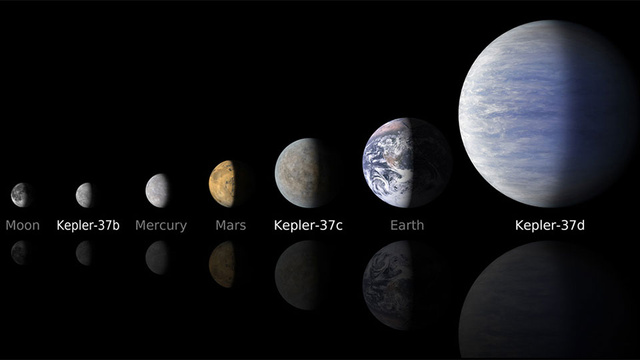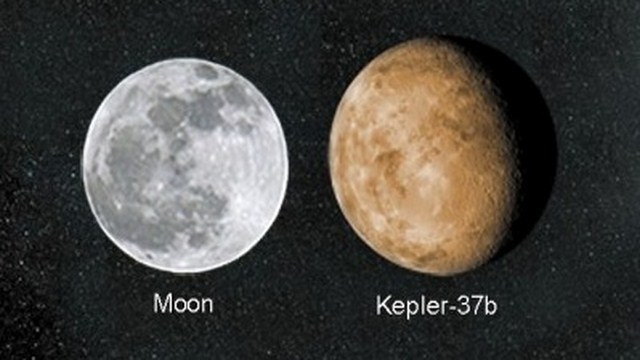
NASA announced that by using its Kelper space telescope, it has detected the smallest known planet outside of our solar system. Why is this a big deal? Well, the discovery shows that the Kelper telescope has the ability to detect smaller, earth-like planets in other solar systems. The exo-planets that the Kelper has already discovered have been significantly larger than Earth and believed to be gassy or watery in composition. Smaller, rocky planets that have the potential to hold life are harder to find because their size makes them more difficult to be detected. Here’s what you need to know about Kelper 37b, the smallest planet ever detected outside our solar system.
1. Kepler-37b is the Smallest Exoplanet to Ever Be Detected

The planet, called Kelper 37b, is way smaller than anyone thought the Kelper telescope could ever detect, reports the Los Angeles Times. It’s a hot, rocky world that is about the same size as our moon and orbits its sun every 13 days.
“This is the smallest exoplanet that’s ever been found,” astrophysicist Thomas Barclay, lead author of a report on the discovery, said. “We’re breaking new ground here.”
2. Planets are Detected by Dips in Light
Far away planets are detected by space telescopes by measuring the dips in light a star gives off as a planet passes in front of it. Small, earth-like planets are hard to detect because the dips in light they generate are too small for most telescopes to notice. The discovery of Kelper 37b proves that the Kelper space telescope is sensitive enough to detect far away earth-like planets.
3. It’s 210 Light-Years From Earth

Kelper 37b is about 210 light-years away from our own planet. That’s an insane distance to be able to detect such a small planet.
4. It’s One of Three Planets
The small planet is one of three observed in its solar system. Kelper 37b is the smallest. Kelper 37c is its neighbor, another rocky planet about three-quarters of the size of Earth, and orbits its sun in 21 days. The third planet, Kelper 37d, is believed to be a gassy, Neptune-like planet and twice the size of Earth. It orbits its sun in 40 days.
5. None Of Them Would Be Able to Support Life

Unfortunately, none of the planets would be able to support life because they are too close to its sun. However, the discovery of the small planet proves that earth-like planets with longer orbits are possible to find in other solar systems, but just might take a little longer to find.